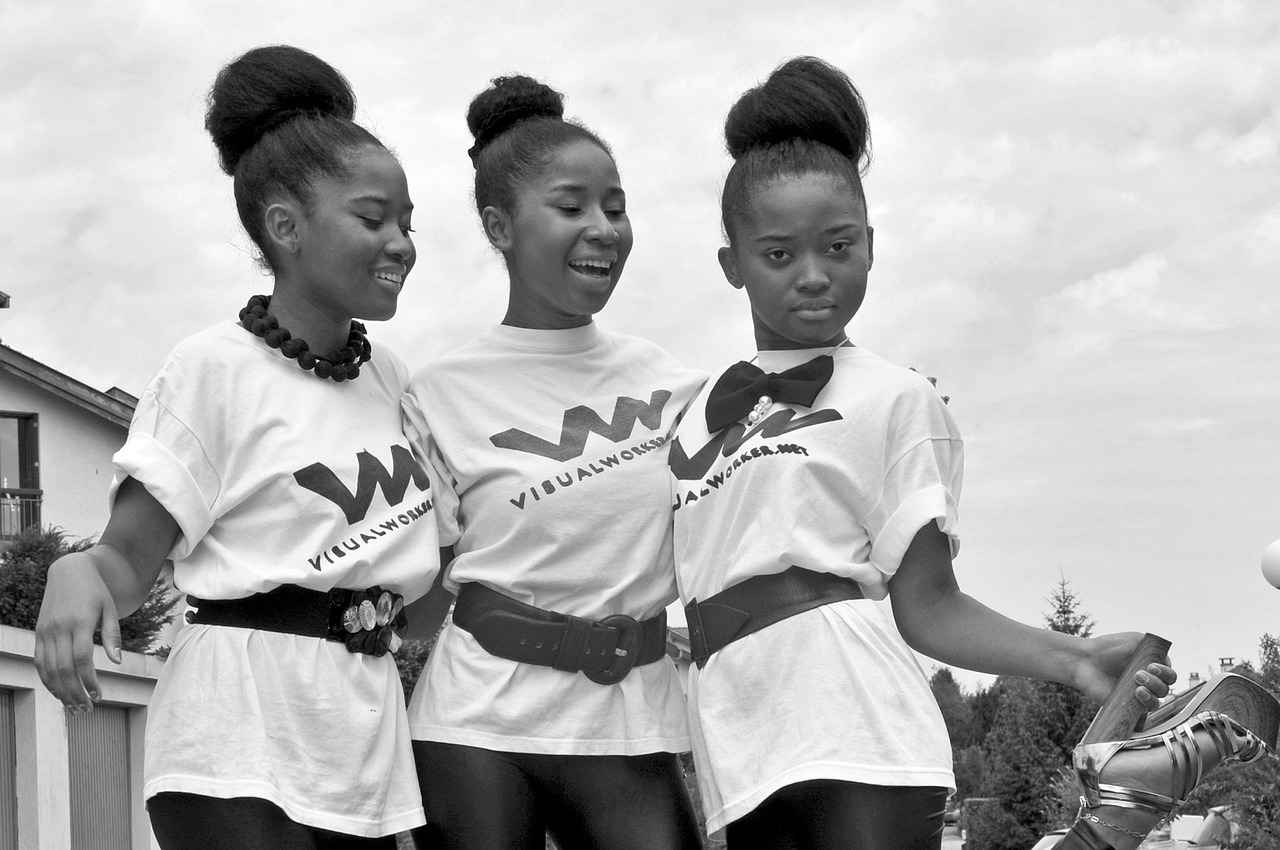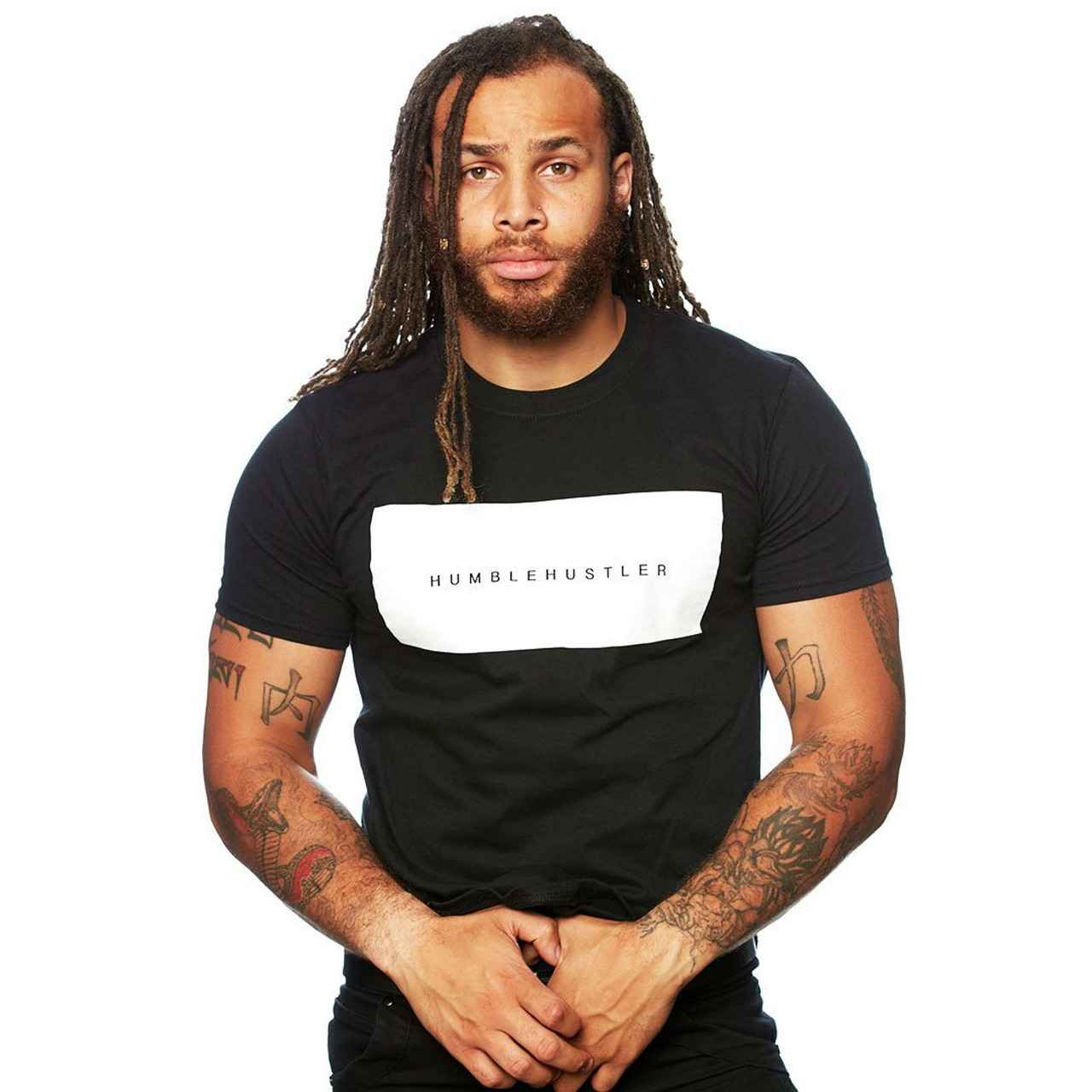This article provides essential tips for beginners looking to dive into custom t-shirt printing, covering everything from design concepts to printing techniques and marketing strategies.
Understanding Different Printing Methods
When starting your custom t-shirt journey, it’s crucial to explore the various printing methods available. The most common techniques include:
- Screen Printing: Ideal for bulk orders, offering vibrant colors and durability.
- Heat Transfer: Great for detailed designs and smaller runs.
- Direct-to-Garment (DTG): Perfect for intricate designs with multiple colors.
Choosing the Right Fabric
Selecting the right fabric is vital for the quality and durability of your printed t-shirts. Here are some popular fabric options:
- Cotton: Breathable and comfortable, making it a popular choice.
- Polyester Blends: Enhances durability and reduces shrinkage.
Designing Eye-Catching Graphics
Compelling designs are key to successful custom t-shirt printing. Utilize design software like Adobe Illustrator or Canva to create professional-quality graphics. Understanding color theory can also enhance your design’s impact.
Preparing Your Artwork for Printing
Properly preparing your artwork is essential for achieving high-quality prints. Ensure you use the correct file formats, maintain high resolution, and understand size considerations for optimal results.
Finding a Reliable Printing Partner
Partnering with a reliable printing service can greatly impact your success. Evaluate print quality by requesting samples, and find a balance between cost and quality to ensure profitability.
Marketing Your Custom T-Shirts
Effective marketing strategies are crucial for reaching your target audience. Utilize social media platforms to showcase your designs and consider building an online store to facilitate sales.
Conclusion: Your Custom T-Shirt Journey
Embarking on a custom t-shirt printing journey can be rewarding. By following these tips, beginners can create quality products and successfully navigate the market.

Understanding Different Printing Methods
When it comes to custom t-shirt printing, selecting the right method is crucial for achieving the desired outcome. Each printing technique offers unique benefits and limitations, making it essential to understand their differences before embarking on your project. Below, we explore three popular printing methods: screen printing, heat transfer, and direct-to-garment (DTG).
| Printing Method | Advantages | Disadvantages |
|---|---|---|
| Screen Printing |
|
|
| Heat Transfer |
|
|
| Direct-to-Garment (DTG) |
|
|
In conclusion, the best printing method for your custom t-shirt project depends on several factors, including your budget, order size, and design complexity. Screen printing is excellent for bulk orders, while heat transfer is perfect for small runs. On the other hand, DTG offers the flexibility of detailed designs without the need for large quantities. Assess your specific needs to choose the most suitable method for your t-shirt printing venture.

Choosing the Right Fabric
Selecting the right fabric is crucial for the quality and durability of your printed t-shirts. The fabric you choose not only affects the look and feel of the final product but also its suitability for various printing techniques. Understanding the characteristics of different fabric types can help you make an informed decision that enhances your custom t-shirt project.
When it comes to custom t-shirts, there are several popular fabric types to consider:
- Cotton: Known for its softness and breathability, cotton is a favorite for t-shirts. It holds ink well, making it suitable for screen printing and direct-to-garment (DTG) printing.
- Polyester: This synthetic fabric is durable and resistant to wrinkles and shrinking. It is ideal for dye-sublimation printing, which allows for vibrant colors and intricate designs.
- Blends: Fabrics that combine cotton and polyester offer the best of both worlds. They provide comfort, durability, and less shrinkage, making them versatile for various printing methods.
The weight of the fabric, measured in grams per square meter (GSM), significantly impacts the t-shirt’s feel and durability. Lighter fabrics (150-160 GSM) are great for warmer climates, while heavier fabrics (180-220 GSM) provide a more substantial feel and are better for layering.
Consider your design and target audience when selecting fabric. For detailed graphics and vibrant colors, polyester or blends may be more suitable. Conversely, if comfort and breathability are your priorities, 100% cotton is the way to go.
In conclusion, taking the time to choose the right fabric is essential for the success of your custom t-shirt printing venture. By understanding the characteristics of different fabrics and their compatibility with various printing techniques, you can ensure that your final product meets both quality standards and customer expectations.
Cotton vs. Blends
When it comes to custom t-shirt printing, the choice of fabric is essential for both the final product’s quality and the wearer’s comfort. Understanding the differences between 100% cotton and cotton blends can significantly impact your decision-making process. Here, we delve into the benefits and drawbacks of each fabric type to help you make an informed choice.
| Aspect | 100% Cotton | Cotton Blends |
|---|---|---|
| Comfort | Very soft and breathable, ideal for sensitive skin. | May have a different feel depending on the blend, but often retains good comfort. |
| Durability | Prone to wear and tear over time. | Generally more durable; blends with polyester resist wrinkles and shrinking. |
| Printing Quality | Excellent ink absorption, leading to vibrant prints. | Good for printing, but some blends may affect color vibrancy. |
| Cost | Typically more expensive due to higher quality. | Often more affordable, making it a cost-effective choice for bulk orders. |
Benefits of 100% Cotton: Known for its breathability and comfort, 100% cotton is often the go-to choice for custom t-shirts. It allows for excellent moisture absorption, making it suitable for warm weather. Additionally, the fabric provides a natural feel that many consumers prefer.
Advantages of Cotton Blends: Cotton blends, such as those mixed with polyester, offer enhanced durability and resistance to shrinkage. This makes them ideal for everyday wear and frequent washing. Furthermore, they can maintain their shape better than pure cotton, which can lead to longer-lasting garments.
In conclusion, the choice between 100% cotton and cotton blends largely depends on your specific needs and preferences. If you prioritize comfort and natural fibers, 100% cotton may be your best option. However, if you seek durability and cost-effectiveness, cotton blends could be the way to go.
Benefits of Cotton
Cotton is a natural fiber that has been a favorite in the apparel industry for decades, especially for custom t-shirts. Its breathability and comfort make it a top choice among consumers and designers alike. Understanding the advantages of cotton can greatly enhance both printing quality and customer satisfaction.
- Breathability: Cotton fibers allow air to circulate, which helps keep the wearer cool and comfortable, particularly in warm weather. This makes cotton t-shirts ideal for casual wear and outdoor activities.
- Softness: The natural softness of cotton provides a comfortable fit against the skin, which is essential for everyday wear. This quality is highly valued by customers who prioritize comfort in their clothing choices.
- Durability: Cotton is known for its strength and durability. When properly cared for, cotton t-shirts can withstand multiple washes without losing their shape or color, making them a wise investment for consumers.
- Printing Quality: Cotton’s texture allows for excellent ink absorption, which results in vibrant and long-lasting prints. This is particularly important for custom designs that aim to make a statement.
- Hypoallergenic: Being a natural fiber, cotton is less likely to cause allergic reactions compared to synthetic materials. This is a significant advantage for those with sensitive skin.
- Eco-Friendliness: Organic cotton options are available, which are grown without harmful pesticides and chemicals, appealing to environmentally conscious consumers.
In conclusion, cotton offers a myriad of benefits that cater to both the practical needs of customers and the aesthetic demands of designers. Its versatility and comfort make it a staple in the custom t-shirt industry, ensuring that both the product quality and customer satisfaction remain high.
Advantages of Blends
When it comes to custom t-shirt printing, blended fabrics have gained popularity for their unique properties that enhance both durability and comfort. Understanding the advantages of these materials is essential for creating high-quality products that meet customer preferences.
| Property | Benefit |
|---|---|
| Durability | Blended fabrics, such as cotton-polyester mixes, are often more resistant to wear and tear compared to 100% cotton. This means your printed designs will last longer, maintaining their vibrancy and integrity even after multiple washes. |
| Shrinkage Resistance | One of the common issues with cotton shirts is shrinkage. Blended fabrics significantly reduce this risk, ensuring that your t-shirts retain their original shape and size, which is a crucial factor for customer satisfaction. |
| Comfort | Blends often provide a softer feel against the skin, combining the breathability of cotton with the smoothness of synthetic fibers. This results in a comfortable wearing experience, making them ideal for everyday use. |
| Moisture Wicking | Some blended fabrics offer moisture-wicking properties, which help to keep the wearer dry and comfortable. This is particularly beneficial for active individuals or those living in warmer climates. |
In summary, choosing blended fabrics for your custom t-shirt projects can greatly influence the final product’s quality. Their enhanced durability, reduced shrinkage, and comfort make them a preferred choice among consumers. As you consider fabric options, keep in mind the impact these materials can have on your customers’ preferences and overall satisfaction.
By leveraging the advantages of blends, you can create t-shirts that not only look great but also stand the test of time, ultimately leading to a successful custom t-shirt business.
Fabric Weight and Feel
Fabric weight is a critical factor that influences the overall feel and performance of a t-shirt. When selecting fabric for custom t-shirts, understanding the weight of the material can significantly impact the final product’s comfort, durability, and appeal to your target audience.
The weight of fabric is typically measured in grams per square meter (GSM). Lighter fabrics, generally below 150 GSM, are ideal for warm weather, offering breathability and a relaxed fit. In contrast, heavier fabrics, usually above 200 GSM, provide a more structured feel, making them suitable for cooler climates or for styles requiring a more robust appearance.
When choosing the right fabric weight, consider the intended design and the preferences of your audience. For instance, if you are designing t-shirts for an athletic audience, a lighter, moisture-wicking fabric may be more appealing. On the other hand, if your target market is looking for something more fashionable or formal, a heavier fabric could enhance the garment’s perceived value.
Additionally, fabric weight can affect printing techniques. Lighter fabrics may work better with methods such as screen printing, while heavier fabrics might be more compatible with direct-to-garment printing. Understanding these nuances can help you make informed decisions that align with both your design vision and your customers’ expectations.
In conclusion, the fabric weight you choose plays an essential role in the success of your custom t-shirt project. By carefully considering the weight alongside your design goals and audience preferences, you can create t-shirts that not only look great but also feel fantastic to wear.

Designing Eye-Catching Graphics
is essential for anyone looking to make a mark in the custom t-shirt printing industry. Compelling designs not only grab attention but also resonate with your target audience, ensuring your creations stand out in a crowded market. Below are some valuable tips and insights to enhance your graphic design skills.
- Understand Your Audience: Before diving into design, it’s crucial to know who your audience is. Conduct surveys or engage with potential customers on social media to gather insights about their preferences and styles.
- Keep It Simple: Sometimes, less is more. A clean and straightforward design can be more impactful than an overly complex one. Aim for clarity and focus on your main message.
- Incorporate Bold Colors: Color plays a significant role in attracting attention. Utilize vibrant colors that align with your brand identity and evoke the desired emotions in your audience.
- Utilize Typography Effectively: The choice of fonts can significantly affect the overall look of your design. Select fonts that are readable and complement your graphics. Experiment with different styles to find the perfect fit.
- Use High-Quality Images: Ensure that any images or graphics used are of high resolution. This not only enhances the visual appeal but also ensures that the final print quality is top-notch.
- Stay On Trend: Keep an eye on current design trends. While it’s essential to maintain your unique style, incorporating popular trends can make your designs more relevant and appealing.
Additionally, leveraging design software like Adobe Illustrator or Canva can help you create professional-quality graphics. These tools offer a variety of templates and features that make the design process more straightforward and enjoyable.
Conclusion: By applying these tips and focusing on creating visually appealing graphics, you can significantly enhance your custom t-shirt designs. Remember, compelling designs not only attract customers but also build brand loyalty, making your products memorable in the eyes of your audience.
Using Design Software
When embarking on your journey into custom t-shirt printing, one of the most crucial steps is mastering design software. Familiarizing yourself with popular options such as Adobe Illustrator and Canva can significantly enhance your ability to create professional-quality graphics tailored for your t-shirts. These tools offer a range of features that cater to both beginners and experienced designers alike.
- Adobe Illustrator: Renowned for its vector graphics capabilities, Adobe Illustrator allows you to create scalable designs that maintain their quality regardless of size. This is particularly beneficial for t-shirt designs, as you can easily adjust the dimensions without losing clarity.
- Canva: Perfect for beginners, Canva provides an intuitive interface with numerous templates and design elements. Its drag-and-drop functionality makes it easy to create stunning visuals without extensive design knowledge.
Both software options enable users to experiment with various design elements, including shapes, colors, and typography. Understanding color theory is essential when using these tools, as it helps you select palettes that resonate with your target audience. For instance, vibrant colors can grab attention, while muted tones may convey elegance.
Additionally, consider utilizing features like layers and grids to organize your designs effectively. This organization not only streamlines your workflow but also enhances the overall quality of your artwork. Remember to save your designs in the appropriate file formats, such as PNG or SVG, to ensure optimal print quality.
In conclusion, investing time in learning design software is vital for anyone serious about custom t-shirt printing. By leveraging tools like Adobe Illustrator and Canva, you can create eye-catching graphics that elevate your t-shirt designs and appeal to your audience.
Color Theory and Application
Color theory is a fundamental aspect of design that can significantly enhance the impact of your custom t-shirt creations. Understanding how colors interact and influence perception is crucial for anyone looking to make a memorable statement through their designs. This section will delve into the principles of color theory and how to apply them effectively.
At its core, color theory encompasses the color wheel, which illustrates the relationships between different colors. The primary colors—red, blue, and yellow—combine to create secondary colors like green, orange, and purple. By mastering these relationships, you can create visually appealing designs that attract attention.
- Complementary Colors: These are colors located opposite each other on the color wheel. Using complementary colors can create striking contrasts that draw the eye.
- Analogous Colors: These colors are next to each other on the wheel and create a harmonious look. They are perfect for designs that require a softer touch.
- Triadic Colors: This scheme involves three colors evenly spaced around the wheel, offering a vibrant and balanced palette.
When applying color theory to your designs, consider the emotional impact of colors. For instance, blue often conveys trust and calmness, while red can evoke excitement or urgency. By aligning your color choices with the message you want to convey, you can enhance the effectiveness of your designs.
Moreover, always keep your target audience in mind. Different demographics may respond differently to color schemes. Conducting research on your audience’s preferences can guide your color selections, ensuring that your designs resonate with them.
In conclusion, mastering color theory is an invaluable skill for any designer. By understanding color relationships and their psychological effects, you can create custom t-shirts that not only attract attention but also convey your intended message effectively.

Preparing Your Artwork for Printing
is a crucial step in the custom t-shirt printing process. High-quality prints begin with well-prepared designs, ensuring that your creative vision translates effectively onto fabric. In this section, we will explore best practices for file formats, resolution, and color settings to help you achieve the best results.
When it comes to printing, the file format you choose can significantly impact the final outcome. Here are some commonly used formats:
- PNG: Ideal for designs with transparent backgrounds and vibrant colors.
- JPEG: Best for photographic images but can lose quality when enlarged.
- AI: Adobe Illustrator files retain quality and are preferred for vector designs.
- PDF: Versatile and widely accepted, allowing for high-quality prints.
The resolution of your artwork is critical for achieving clear and sharp prints. A resolution of 300 DPI (dots per inch) is recommended for t-shirt designs, as it ensures that the images remain crisp when printed. Remember to consider the size of your design; larger prints may require higher resolutions to maintain quality.
Color settings also play a vital role in your artwork’s success. Using the CMYK color model (Cyan, Magenta, Yellow, Black) is essential for print designs, as this model accurately reflects how colors will appear on fabric. Always convert your RGB (Red, Green, Blue) designs to CMYK before sending them to print to avoid unexpected color shifts.
In conclusion, properly preparing your artwork is fundamental to achieving high-quality prints. By understanding the appropriate file formats, maintaining the correct resolution, and utilizing the right color settings, you can ensure that your custom t-shirts look professional and vibrant. Follow these guidelines to enhance your printing experience and deliver outstanding products.
File Formats Explained
When it comes to custom t-shirt printing, choosing the right file format is crucial for achieving the best possible results. Different printing methods require specific file formats to ensure that your designs are reproduced accurately and with high quality. Understanding these formats can save you time, money, and frustration in the printing process.
| Printing Method | Recommended File Formats | Notes |
|---|---|---|
| Screen Printing | AI, EPS, PDF | Vector files are preferred for scalability without loss of quality. |
| Heat Transfer | PNG, JPEG | Ensure high resolution (300 DPI) for clear prints. |
| Direct-to-Garment (DTG) | PNG, TIFF | Transparent backgrounds are ideal for DTG printing. |
Vector vs. Raster
Understanding the difference between vector and raster graphics is essential. Vector images, created with software like Adobe Illustrator, are composed of paths and can be scaled infinitely without losing quality. This makes them ideal for logos and designs that require resizing. On the other hand, raster images, such as photographs, are made up of pixels and can lose clarity when resized. For printing, it’s generally recommended to use vector formats whenever possible.
Resolution Matters
The resolution of your artwork is another critical factor. For high-quality prints, a resolution of at least 300 DPI is necessary. Lower resolutions can lead to pixelation and blurred images, which can detract from the overall appearance of your custom t-shirts.
In conclusion, selecting the right file format for your custom t-shirt designs is vital for ensuring optimal print quality. By understanding the requirements of different printing methods and the importance of resolution, you can better prepare your artwork for a successful printing experience.
Resolution and Size Considerations
When it comes to custom t-shirt printing, resolution plays a crucial role in determining the clarity and overall quality of your printed images. Understanding the significance of DPI (dots per inch) and image sizing is essential for achieving professional results that resonate with your audience.
DPI is a measurement that indicates how many dots of ink are used to create an image. The higher the DPI, the more detail your printed image will have. For instance, a resolution of 300 DPI is typically recommended for high-quality prints, ensuring that your designs are sharp and vibrant. This is particularly important for intricate designs and images that contain fine details.
In addition to DPI, image sizing also affects the final output. When preparing your artwork, it’s vital to ensure that the dimensions of your image match the size of the printed area on the t-shirt. If the image is too small, it may appear pixelated or blurry when enlarged. Conversely, if the image is too large, it may require resizing, which can also lead to loss of quality.
To achieve the best results, consider the following tips:
- Use vector graphics whenever possible, as they can be resized without losing quality.
- Check the resolution of your images before sending them to print; aim for at least 300 DPI.
- Maintain the original aspect ratio of your images to prevent distortion during resizing.
By paying attention to both resolution and image sizing, you can ensure that your custom t-shirt designs are not only visually appealing but also professionally executed. This attention to detail will ultimately enhance customer satisfaction and contribute to the success of your custom t-shirt business.

Finding a Reliable Printing Partner
is a critical step in ensuring the success of your custom t-shirt business. The right printing partner not only enhances the quality of your products but also streamlines your production process. Here are some essential tips to help you select the ideal printing service for your needs.
- Evaluate Print Quality: Before committing to a printing service, request samples of their work. Look for clarity, color accuracy, and overall finish. High-quality prints are essential for customer satisfaction and brand reputation.
- Assess Turnaround Times: Timely delivery is crucial in the custom t-shirt business. Discuss production timelines with potential partners to ensure they can meet your deadlines, especially during peak seasons.
- Consider Technology Used: Different printing methods yield different results. Research the technology employed by the printing service, such as screen printing, direct-to-garment, or heat transfer, to determine which aligns best with your design needs.
- Check Customer Reviews: Customer feedback can provide valuable insights into a printing partner’s reliability and service quality. Look for reviews on independent platforms to gauge their reputation in the industry.
- Understand Pricing Structures: While cost is a significant factor, it should not be the only consideration. Ensure that the pricing reflects the quality of service provided. Discuss any hidden fees and negotiate terms that work for both parties.
- Communication is Key: A printing partner should be responsive and open to communication. This is essential for addressing any issues that may arise during production and ensuring that your vision is accurately translated into the final product.
In conclusion, choosing the right printing partner can significantly impact your custom t-shirt business. By focusing on quality, technology, and communication, you can build a successful relationship that supports your brand’s growth.
Evaluating Print Quality
is a fundamental aspect when selecting a printing partner for your custom t-shirt business. The quality of print can significantly affect the overall perception of your brand and the satisfaction of your customers. Therefore, understanding what to look for in print samples is crucial for ensuring that your designs are reproduced accurately and effectively.
When assessing print quality, consider the following factors:
- Color Accuracy: Ensure that the colors in the print match your original design. This includes checking for vibrancy and consistency across different samples.
- Detail and Clarity: Examine the sharpness of the images and text. Fine details should be clearly visible, and there should be no blurring or pixelation.
- Fabric Compatibility: Different fabrics react differently to printing methods. Request samples printed on the same fabric you intend to use to evaluate how well the print adheres and looks.
- Durability: Assess how the print holds up after washing. A quality print should withstand multiple washes without fading or cracking.
- Finish Quality: Look for a smooth finish without any imperfections. The texture of the print can impact the overall feel of the t-shirt.
It’s advisable to request multiple samples from potential printing partners. This will allow you to compare different prints side by side and make an informed decision based on your specific needs.
Additionally, consider asking for references or reviews from previous clients. This can provide insight into the printer’s reliability and quality consistency. Remember, a good printing partner should be willing to work with you to achieve the best possible results for your custom t-shirts.
In conclusion, taking the time to evaluate print quality can save you from future headaches and ensure that your custom t-shirts meet your expectations and those of your customers.
Cost vs. Quality Balance
Finding the right balance between cost and quality is crucial for the success of any business, particularly in the custom t-shirt printing industry. To achieve profitability without compromising on standards, it is essential to explore effective strategies for negotiating pricing while ensuring high-quality outputs.
One of the first steps in this process is to research and compare suppliers. Gathering quotes from multiple printing partners allows you to identify competitive pricing while assessing the quality of their work. Look for reviews and testimonials to gauge their reliability and print quality. This research will help you make informed decisions that align with your budget.
Establishing clear communication with your printing partner is also vital. Discuss your specific needs and expectations upfront. Be transparent about your budget constraints while emphasizing the importance of maintaining quality. This open dialogue can often lead to mutually beneficial arrangements, such as bulk discounts or flexible payment terms.
Additionally, consider investing in quality materials. While it may seem tempting to cut costs by opting for cheaper fabrics or printing methods, doing so can negatively impact the overall quality of your t-shirts. High-quality materials not only enhance the final product but also improve customer satisfaction and loyalty, ultimately leading to repeat business.
Another effective strategy is to prioritize long-term relationships with suppliers. Building a strong partnership can lead to better pricing, exclusive deals, and priority service. Many suppliers value long-term clients and are willing to negotiate terms that benefit both parties.
In conclusion, achieving the right is a dynamic process that requires careful consideration and strategic planning. By researching suppliers, communicating openly, investing wisely, and fostering long-term relationships, you can ensure that your custom t-shirt business thrives while maintaining high standards.

Marketing Your Custom T-Shirts
In today’s competitive marketplace, effective marketing strategies are essential for reaching your target audience and boosting sales of your custom t-shirt designs. By implementing the right techniques, you can effectively promote your products and stand out from the crowd.
Utilizing Social Media Platforms
Social media is a powerful tool for marketing your custom t-shirts. Platforms like Instagram, Facebook, and Pinterest allow you to showcase your designs and connect with potential customers. Here are some strategies:
- Create Engaging Content: Post high-quality images of your t-shirts, styled in various settings to attract attention.
- Leverage User-Generated Content: Encourage customers to share photos wearing your designs, creating a community around your brand.
- Run Targeted Ads: Use social media advertising to reach specific demographics interested in custom apparel.
Building an Online Store
Having a dedicated online store is crucial for selling your custom t-shirts. Consider these steps:
- Select a User-Friendly Platform: Choose e-commerce platforms like Shopify or WooCommerce that are easy to navigate.
- Optimize for SEO: Ensure your product descriptions are rich with relevant keywords to improve visibility in search engines.
- Offer Promotions: Use discounts or bundle deals to entice customers and encourage larger purchases.
Engaging with Your Audience
Interaction with your audience can significantly enhance your marketing efforts. Consider the following:
- Host Giveaways: Organize contests where participants can win your t-shirts, increasing brand awareness.
- Send Newsletters: Keep your audience informed about new designs, promotions, and updates through regular email newsletters.
In conclusion, by leveraging social media, establishing a robust online presence, and engaging with your audience, you can effectively market your custom t-shirts. Implement these strategies to enhance your brand visibility and drive sales.
Utilizing Social Media
In today’s digital age, social media platforms have transformed the way businesses promote their products, including custom t-shirts. These platforms are not only a means to share visuals but also serve as a powerful tool for engaging with potential customers and showcasing your unique designs. Here’s how to effectively leverage social media to boost your t-shirt business.
- Choose the Right Platforms: Not all social media platforms are created equal. Focus on platforms like Instagram and Facebook, which are visually driven and have large user bases interested in fashion and custom designs.
- Create Engaging Content: High-quality images of your t-shirts are essential. Use lifestyle shots that show your shirts in real-life situations, as well as close-ups that highlight the design details.
- Utilize Stories and Reels: Use features like Instagram Stories and Reels to showcase behind-the-scenes content, share customer testimonials, or even run polls to engage your audience.
- Engage with Your Audience: Respond to comments, answer questions, and interact with your followers. Building a community around your brand can lead to stronger customer loyalty.
- Run Targeted Ads: Consider using paid advertising to reach a larger audience. Platforms like Facebook allow you to target specific demographics, ensuring your ads reach potential customers who are most likely to be interested in your t-shirts.
- Collaborate with Influencers: Partnering with social media influencers can help you reach new audiences. Look for influencers whose style aligns with your brand, and consider sending them samples of your t-shirts in exchange for promotion.
By implementing these strategies, you can effectively utilize social media to promote your custom t-shirts, engage with your audience, and ultimately drive sales. Remember, consistency is key, so make sure to regularly update your social media channels with fresh content.
Building an Online Store
is a crucial step for anyone looking to sell custom t-shirts effectively. In today’s digital age, having an e-commerce platform allows you to reach a broader audience and streamline the purchasing process for your customers. This section delves into the essential aspects of setting up an online store that not only showcases your unique designs but also facilitates smooth transactions.
- Choosing the Right E-Commerce Platform: Consider platforms like Shopify, WooCommerce, or BigCommerce. Each offers different features, so select one that aligns with your business needs.
- User-Friendly Design: Your online store should be easy to navigate. Ensure that customers can quickly find products, add them to their cart, and check out without confusion.
- High-Quality Product Images: Use clear, high-resolution images of your t-shirts. Display them from multiple angles to give customers a comprehensive view of what they are purchasing.
- Detailed Product Descriptions: Write informative descriptions that include fabric type, sizing information, and care instructions. This transparency can help customers feel more confident in their purchases.
- Payment and Shipping Options: Offer multiple payment methods like credit cards, PayPal, and digital wallets. Additionally, provide various shipping options to cater to different customer preferences.
Furthermore, consider integrating social media links to promote your t-shirts and engage with your audience. Utilizing platforms like Instagram and Facebook can drive traffic to your online store, allowing you to showcase your designs and connect with potential customers.
Conclusion: Establishing an online store for your custom t-shirt business is not just about selling products; it’s about creating an experience that resonates with your audience. By focusing on user experience and effective marketing strategies, you can build a successful e-commerce platform that stands out in the competitive market.

Conclusion: Your Custom T-Shirt Journey
Embarking on a custom t-shirt printing journey can be an exciting and fulfilling endeavor. For beginners, navigating this creative process may seem daunting, but with the right guidance and tips, it can lead to the successful creation of quality products. This article aims to provide valuable insights into the essential steps and considerations for those new to the custom t-shirt printing industry.
To start, it is crucial to understand the various printing methods available. Each technique, whether it be screen printing, heat transfer, or direct-to-garment (DTG), has its unique benefits and limitations. Beginners should thoroughly research these methods to determine which aligns best with their design goals and budget.
Next, the choice of fabric plays a significant role in the overall quality of the final product. Selecting the right material not only impacts the durability of the t-shirt but also influences the print quality. Cotton, for instance, is favored for its breathability, while blends may offer enhanced durability and reduced shrinkage.
When it comes to designing eye-catching graphics, creativity is key. Utilizing design software such as Adobe Illustrator or Canva can help beginners create professional-quality visuals. Additionally, understanding color theory can significantly enhance the appeal of designs, ensuring they resonate with the target audience.
Proper preparation of artwork is another critical step in the printing process. Beginners should familiarize themselves with the necessary file formats, resolution, and color settings to achieve high-quality prints. A well-prepared file can make a substantial difference in the final product.
Finding a reliable printing partner is essential for success. It is important to evaluate print quality and seek a balance between cost and quality to maintain profitability. Beginners should not hesitate to request samples to ensure their designs are reproduced accurately.
Finally, effective marketing strategies can elevate a custom t-shirt business. Utilizing social media platforms and establishing an online store are vital for reaching potential customers and showcasing designs. Engaging with the audience and promoting products effectively can lead to increased sales and brand recognition.
In conclusion, embarking on a custom t-shirt printing journey can be rewarding. By following these tips, beginners can create quality products and successfully navigate the market, ultimately leading to a thriving business.
Frequently Asked Questions
- What is the best printing method for custom t-shirts?
The best printing method depends on your design and budget. Screen printing is great for bulk orders, while direct-to-garment is perfect for intricate designs with many colors. If you’re looking for something quick and easy, heat transfer might be your go-to!
- How do I choose the right fabric for my t-shirts?
Choosing the right fabric is crucial! 100% cotton is breathable and comfortable, making it a favorite. However, blends can offer more durability and less shrinkage. Think about your audience and the feel you want your shirts to have!
- What software should I use to design my t-shirts?
Popular design software includes Adobe Illustrator and Canva. These tools can help you create stunning graphics that really pop! Just remember, the better your design, the more likely it is to grab attention!
- How do I prepare my artwork for printing?
Preparing your artwork is key! Make sure to use the right file formats and maintain high resolution (at least 300 DPI is recommended). This will ensure your prints come out crisp and professional!
- What should I consider when choosing a printing partner?
Look for a printing partner that delivers high-quality prints and has a good reputation. Always ask for samples to evaluate their work. Also, consider the balance between cost and quality to ensure you get the best bang for your buck!
- How can I effectively market my custom t-shirts?
Utilize social media to showcase your designs and engage with potential customers. Building an online store is also essential for selling your t-shirts. The more visible you are, the better your chances of making sales!












